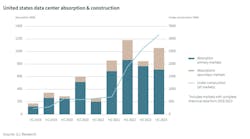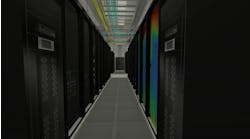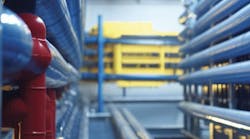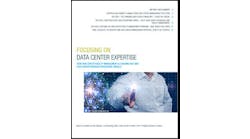Just south of Chicago’s central business district sits Digital Realty's storied 350 East Cermak data center. As one of the original carrier hotels, the building serves as a vital nerve center for data flowing in and out of the city. But what makes the building so interesting to me is the grand library on the top floor. I think it’s the prettiest data hall in the world.
A library is the original data center; we’ve stored the history of humanity in racks and cabinets for thousands of years. However, we likely wouldn’t discover one sitting atop floors full of servers if 350 East Cermak wasn’t a historic building. The facility is one of many successful adaptive reuse projects showcasing how developers can transform yesterday’s centers of commerce into today’s critical infrastructure.
With sustainability becoming increasingly important, redeveloping older buildings can be a powerful way to reduce a building’s carbon footprint and meet mounting demand for new data centers.
Understanding the sustainable promise of adaptive reuse
Data center size, importance and complexity have increased in recent years, driving a reliance on net new facility builds. Both the required time-to-revenue and certainty of technical performance have often driven out the desire for “recycling” older buildings.
Our throwaway culture has led the industry to believe that newness is better, but that’s not always true. As we've quietly taken adaptive reuse off the table in the interest of perceived risk and speed, we've added massively to environmental impact, chiefly in the form of concrete and steel embodied carbon.
With a circular mindset, any commercial building with the right bones and sufficient power supply can be transformed into a data center. Off the top of my head, I can rattle off at least a half dozen examples, stretching from 60 Hudson in New York to One Wilshire in Los Angeles. In Dallas, DataBank’s downtown data center and headquarters occupies a former Federal Reserve Building. Then there’s the iconic Switch Pyramid in Grand Rapids, Michigan. The unique building housed a furniture research and design facility until Switch acquired and redeveloped it as a data center.
The data center industry can even give vacant retail spaces a new purpose. For example, in 2012, edge data center company Ubiquity Critical Environments sought to leverage the massive 250 million-square-foot Sears and Kmart real estate portfolio to house a network of connected edge sites in second and third-tier markets.
Combatting throwaway culture
Given the immense potential of adaptive reuse, why does it continue to be such a missed opportunity? I believe it’s because we lack a true line of sight into the carbon savings of adaptive reuse and, therefore, incentive.
I propose we measure both the embodied carbon used in the original construction and the embodied carbon avoided in not building new. That includes not just concrete and steel but the entire construction value chain: manufacturing, shipping, installation, building and even the act of not paving over a new site.
Armed with these numbers, we need to gamify adaptive reuse — just like how introducing power usage effectiveness (PUE) brought sustainability competition to the industry. Imagine how behavior would change if we issued a carbon accounting credit to companies that make the circular choice to recycle a building.
Why now is the time to invest in adaptive reuse
The accelerating trajectory of the data center build pipeline not only has a huge carbon footprint, but it also outpaces the inventory of sites with power and the supply chain to erect new structures on them.
This land-and-power war is exacerbated by public commitments to shareholders to deliver both revenue and capacity. Add new artificial intelligence (AI) demand to this already constrained market, and we have a severe shortfall.
Mark Ganzi, CEO of Digital Bridge, estimates AI will require 38GW of accretive digital infrastructure demand. If the industry met just 10% of that demand with adaptive reuse and modular deployment, we could recycle and future-fit 380 buildings (assuming 10MW per 10,000 square feet for high-density AI facilities). And with 30 billion square feet of commercial real estate in the US alone, there’s no shortage of applicable sites.
Not only does adaptive reuse lead to massive carbon savings, but it also can reduce time-to-revenue and improve the efficient utilization of stranded power. It’s time to bring new thinking to data center development — a mindset that embraces the old in the name of innovation. It’s just smart. And as 350 East Cermak has shown us, it can be beautiful, too.








